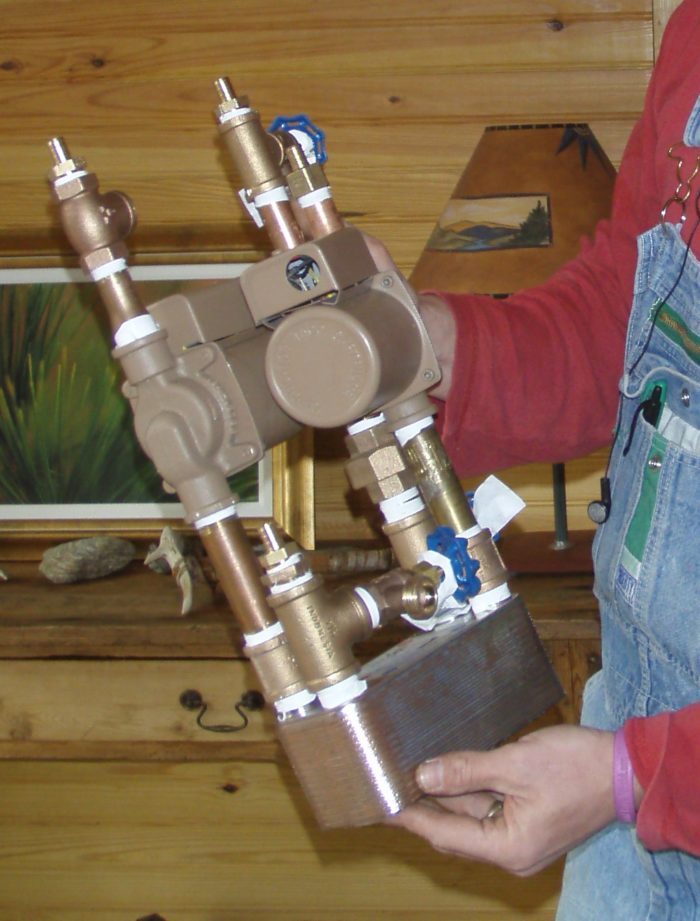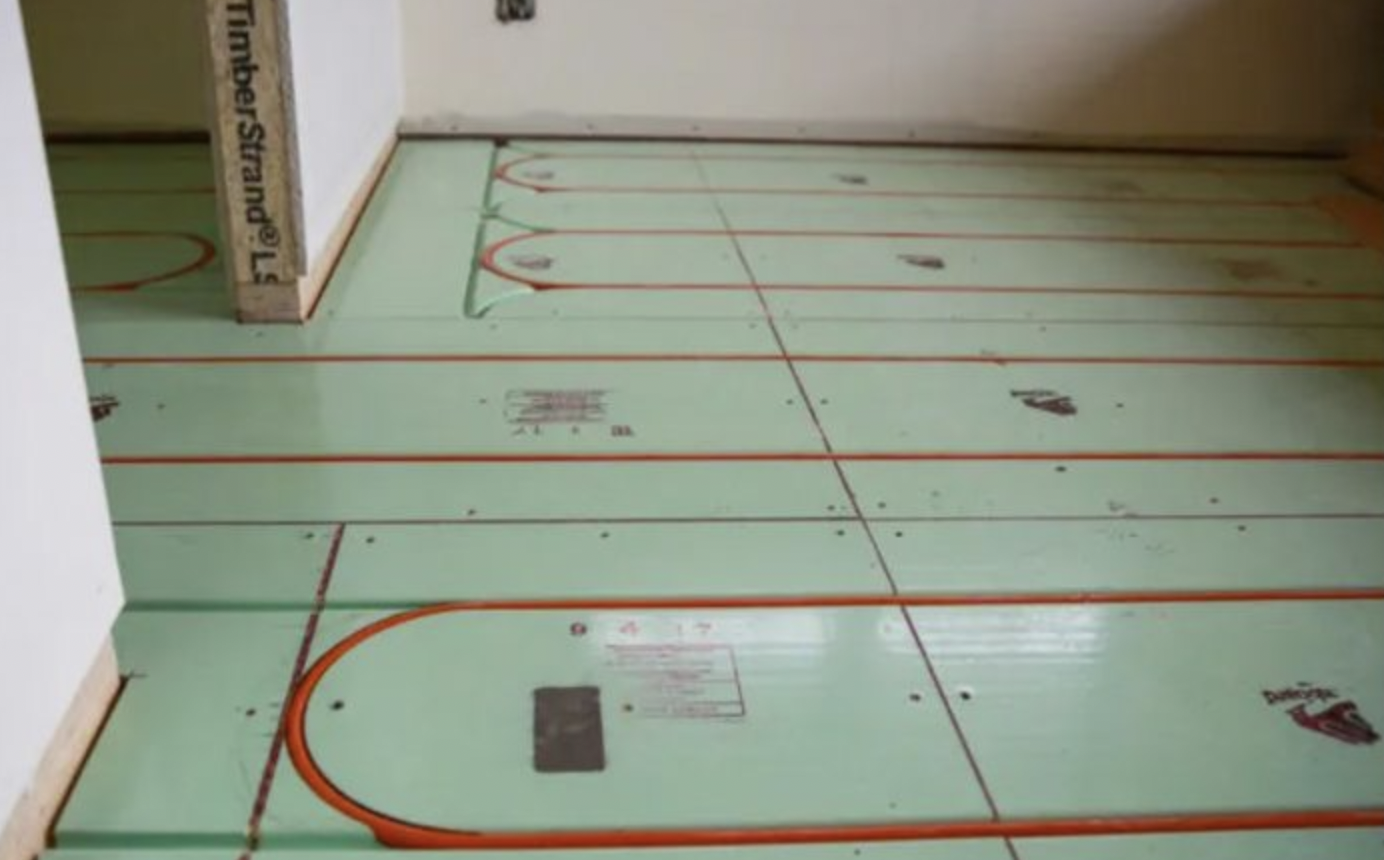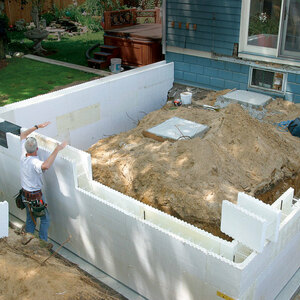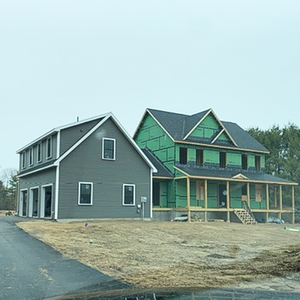
Image Credit: Michael Chandler
Adam Emter is building a new house in North Dakota, a Climate Zone 7 location with some 9,500 heating degree days a year, and temperatures that fluctuate from 30 below zero in the winter to a humid 90 degrees during the summer.
“My family and I plan on living here for many decades,” Emter writes in a Q&A post at GreenBuildingAdvisor, “so I’m very focused on building an efficient and comfortable house. I am also trying to keep a reasonable budget and simple design.”
The house will be a two-level split-entry with 1,200 square feet per floor, and Emter is leaning toward the REMOTE construction technique, which places most or all of the rigid foam insulation outside of the sheathing. An insulating concrete form foundation has already been built, with the basement slab due in the next couple of months.
While the house is under construction, Emter and his family are living in an adjacent 30-by-40 garage heated by a radiant-floor system built around a Polaris water heater. Emter plans on using the same type of heating system in the new house, and it will be an “open direct” system in which there is no separation between his domestic hot water supply and the water that heats the house.
With that as a backdrop, the discussion turns to the potential for problems with his heating design, and how Emter will keep the house cool in what can be very muggy summer conditions. Those are the topics for this Q&A Spotlight.
Is a radiant slab heating system the right choice?
Writing from northern Minnesota, also a Climate Zone 7 locale, Steve Vigoren says he’s planning to build a similar house, and also was considering a radiant slab system.
“From what I have been hearing,” he says, “if you have an airtight…
Weekly Newsletter
Get building science and energy efficiency advice, plus special offers, in your inbox.

This article is only available to GBA Prime Members
Sign up for a free trial and get instant access to this article as well as GBA’s complete library of premium articles and construction details.
Start Free TrialAlready a member? Log in















4 Comments
GE Zoneline vs Minisplit
While I agree that a GE Zoneline "hotel" package unit is relatively low cost and a closet installation provides ducting capability, it does take floor space, adds a compressor inside the room, limits your ability to seal the envelope and they sometimes vibrate. Package units make even less sense in heat pump models as the output drops off quickly below 40F. Unit starts and defrosts are particularly noisy with the compressor in the room. Meanwhile an inverter based mini-split maintains the envelope, can be ducted, starts quietly even in heat pump modes and can operate at full capacity down to 5F. The mini-split's lower cost to operate compensates for the initial price penalty in a few years.
The PTHP is primarily a cooling solution... (response to rjp)
The heating efficiency performance doesn't much matter if it's only being proposed as a cooling solution + potential shoulder-season backup for the hydronic heat. During the shoulder seasons it'll likely be comparable in operating cost to the hydronic system it's backing up. In the 30 days/year of active cooling cited and sporadic use in shoulder-seasons only heating it's hard to imagine a mini-split paying off, even in an expensive electricity market (and power in MN is a bit cheaper than the US average.)
The rotary compressors in many newer PTHP & PTAC products don't shout "motel" the way some might be think, but they're not as quiet as a modulating mini-split. Blower noise on PTHP with rotary compressors exceeds compressor noise, and the Zoneline series is being marketed as a much quieter version. They don't specify the sound levels generated in either dBA or sones. They do specify it's sound transmission class (the sound isolation from other noises outdoors) at STC 29, which isn't terrible, but nowhere near even a batt-insulated 2x4 wall (STC 39).
pump power
The recommended bronze pump draws 85 W. Its maximum fluid power output is about 12 W. That's 14% efficiency when running at its most efficient point; worse at other points on the flow/head curve. ECM pumps, which are much more efficient, are still pretty expensive, but they are usually justified in an application where they run a lot. In an application with a heat exchanger you need to double the number of pumps so the pumps' efficiency is extra important.
450.00
is all it would take to upgrade the source to an HTP Phoenix Light Duty .
http://www.htproducts.com/phoenixldwaterheater.html
ECM pumps provide varying and efficient flow rates always matching the system conditions . These circs should be available in SS in the future which would make them perfect for both sides of the heat exchanger . Don't forget to check local rebate programs as in many areas these also are eligible for a 100.00 rebate per unit .
http://www.taco-hvac.com/products/water_circulation_pumps__circulators/variable_speed_products/viridian_family/index.html#
On the potable side I would pay attention to the FPHX head and flow requirements and size the pump accordingly to worst case scenario , the Grundfos linked to may very well be a bit heavy handed as is the Wilo for the system side I might add . Interested parties may want to try something like this that offers everything needed including outdoor reset .
http://www.taco-hvac.com/uploads/FileLibrary/102-202.pdf
I fail to see the need to move fluid that gives us no benefit . This kinda flies in the face of Exergy.
Please remember . " Price is an issue only in the absence of value ".
Unknown
Log in or become a member to post a comment.
Sign up Log in